
The Sound of Strymon: Sound Designer Pete Celi
Strymon co-founder Pete Celi is responsible for the sound design and DSP algorithm creation for all the Strymon pedals that use DSP. Recently I had the
Free US Shipping On Orders Over $49
Easy 30-Day Returns
Financing Available Through ![]()
Quite often, many of you have reached out to us wanting to know what guitar is being played in a particular Strymon pedal demo video. That got me thinking about taking a deeper dive into the guitars used, and this is the first in a series of articles exploring those instruments.
The first guitars we will focus on represent some of the most often used guitars in our Strymon demos: Agile guitars. In particular, the Agile AL-3000 has been featured in over 16 demo videos, including demos of Lex Rotary, BigSky Multidimensional Reverb, Deco Tape Saturation & Doubletracker, and Volante Magnetic Echo Machine, to name a few.
Though Pete favors his Agile AL-3000, he also has an Agile Harm 1 2TS, an Agile PS-100, an Agile Valkyrie, and an Agile that he refers to as one of his “Frankenstein projects,” which we will hear more about below.
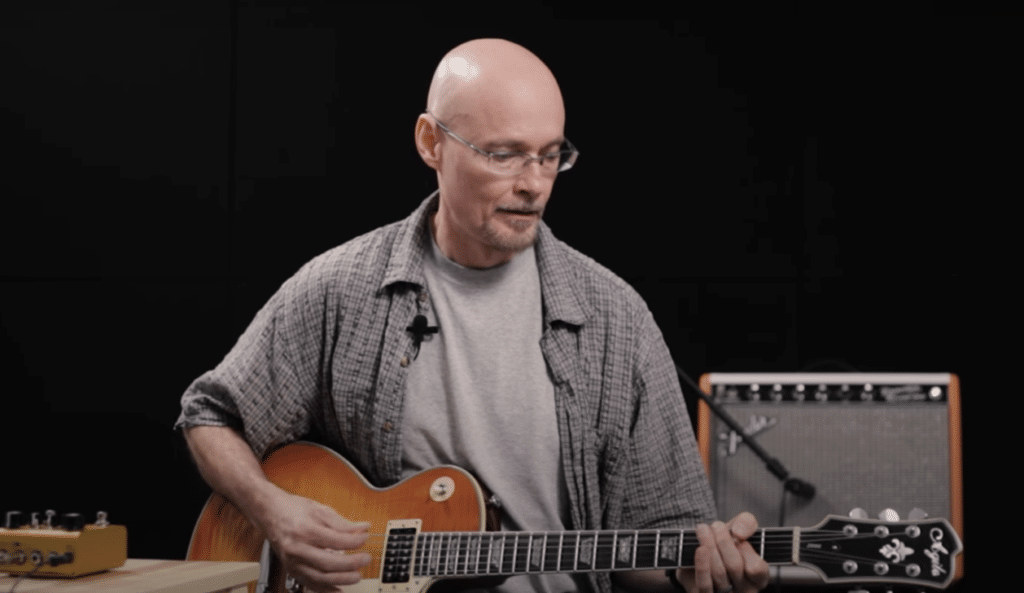
So let’s ask Pete some questions!
What draws you to Agile guitars?
My interest in Agile guitars started in the early 2000’s . There was a buzz going around about what an incredible value these guitars were. They were being compared to the top brands in the industry for about one tenth the price. I bought an Agile AS-1000 semi-hollow body guitar and was pretty impressed with the material, workmanship, and overall quality.
Why has the Agile AL-3000 been your go-to guitar for Strymon demos?
It sounds great and it’s very easy to play, and it’s also the guitar I use most often when working. I have become very accustomed to the sound of it, so I’m comfortable making critical listening decisions based on what I hear when I plug that guitar in. I have to pick it up and put it down many, many times a day while I’m sitting in my desk chair, so the fact that it was not expensive is a big plus. It seemed like every time I was using one of my more expensive guitars while working, there would inevitably be some incident that resulted in a new chip or dent in a prized possession.
Can you give us all the specs for your Agile guitars?
I have lots of them so here goes:
Agile AL-3000 (Les Paul-like)
I replaced the pickups with a Seymour Duncan ’59 in the neck and a GFS Fat Pat in the bridge. I wired the bridge tone control to be a variable coil splitter.
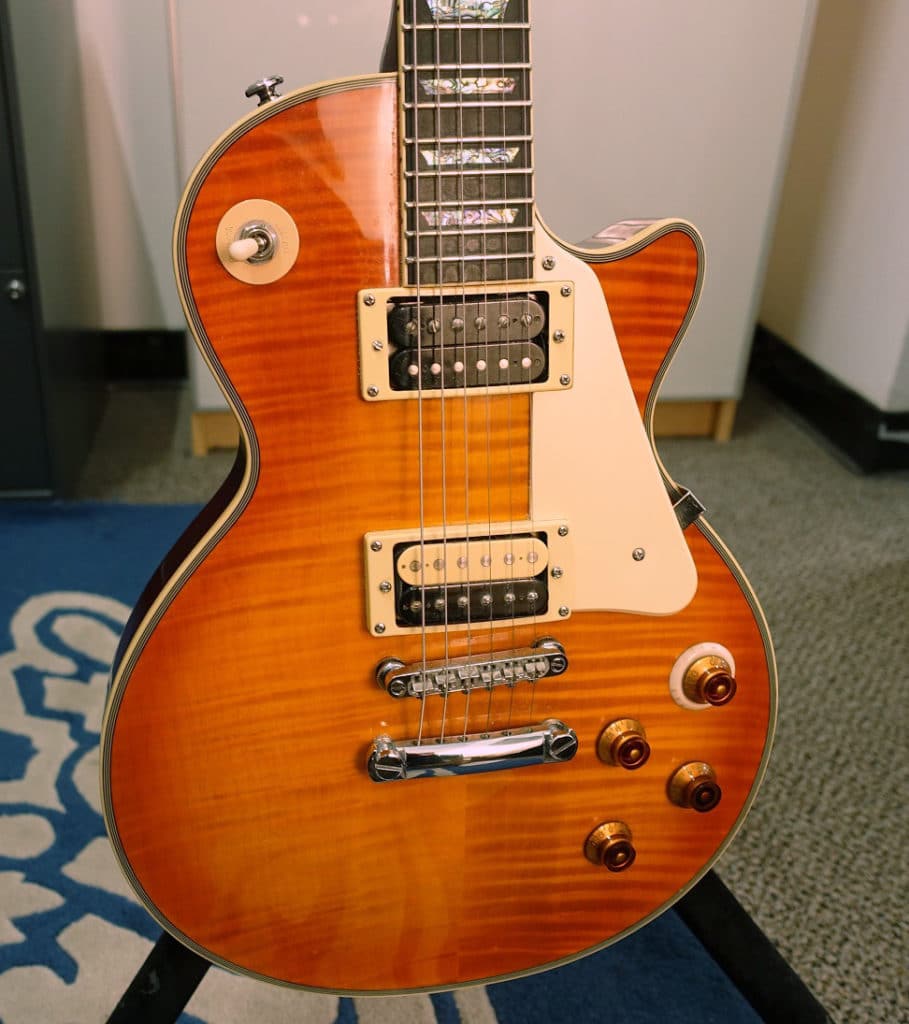
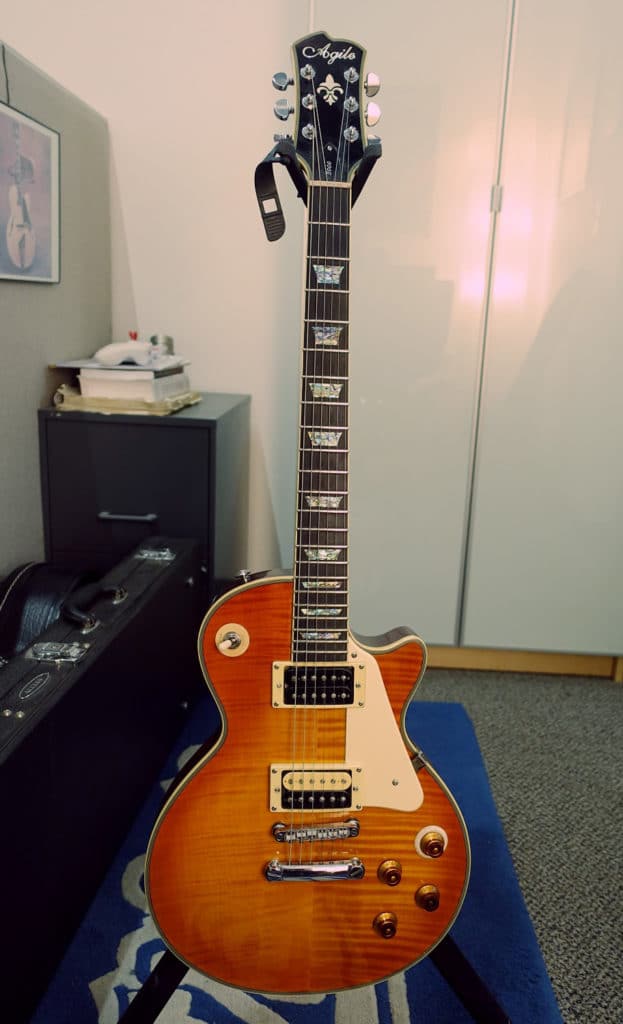
Agile AS-1000 (ES-335-like) is stock and sounds great.
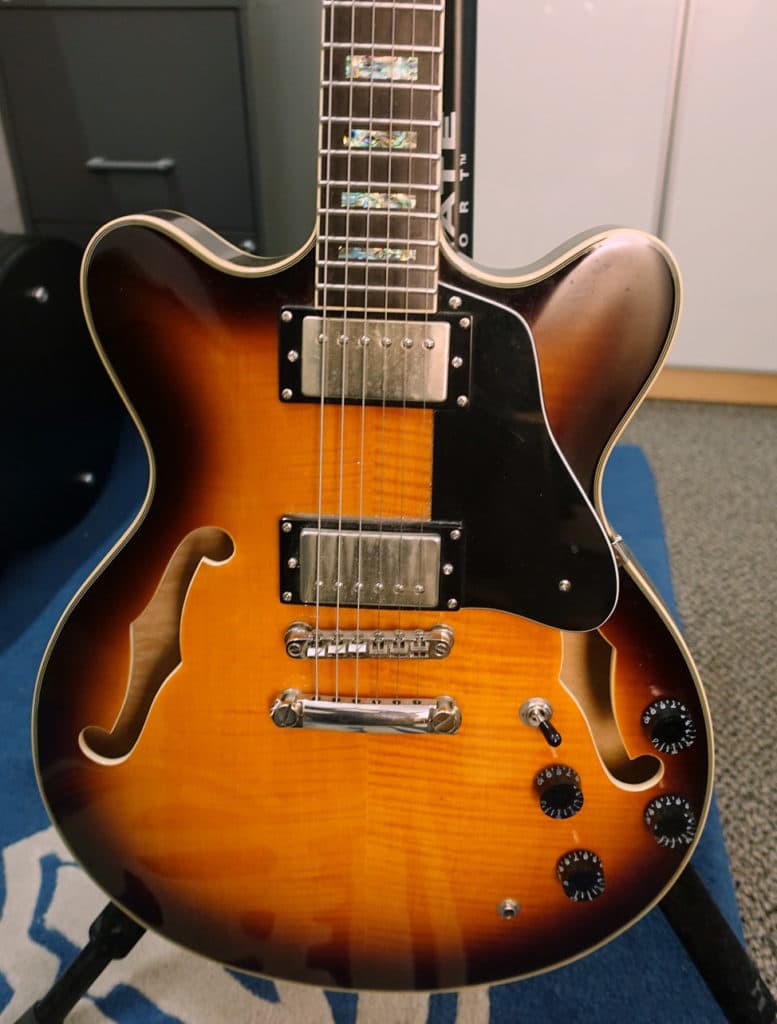
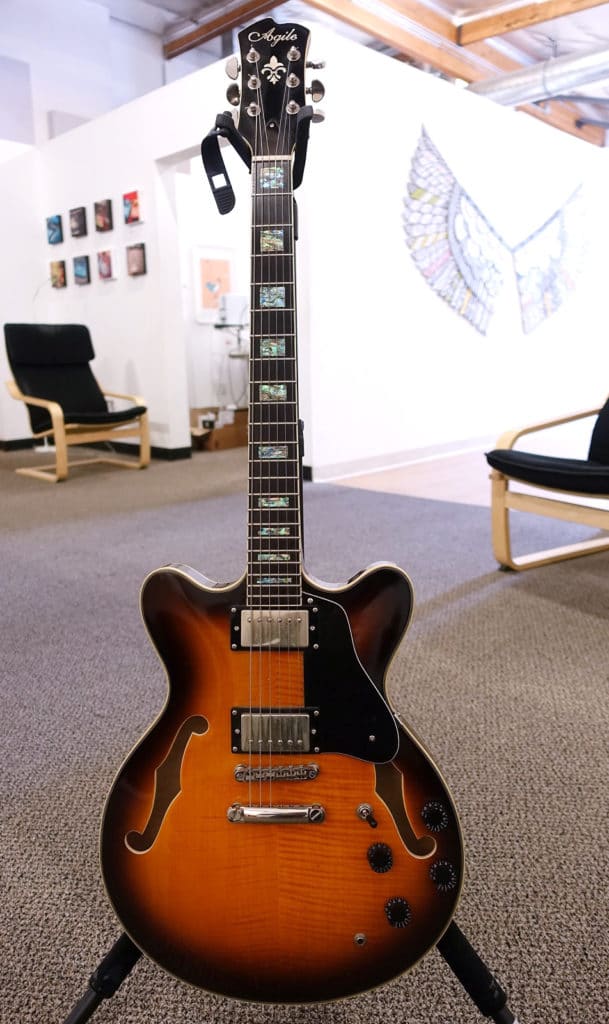
Agile Valkyrie (SG-like)
Has the ‘mustache’ headstock from the early days of Agile. I put the nickel hardware and pickups from the AL-3000 in it to give it a more vintage vibe.
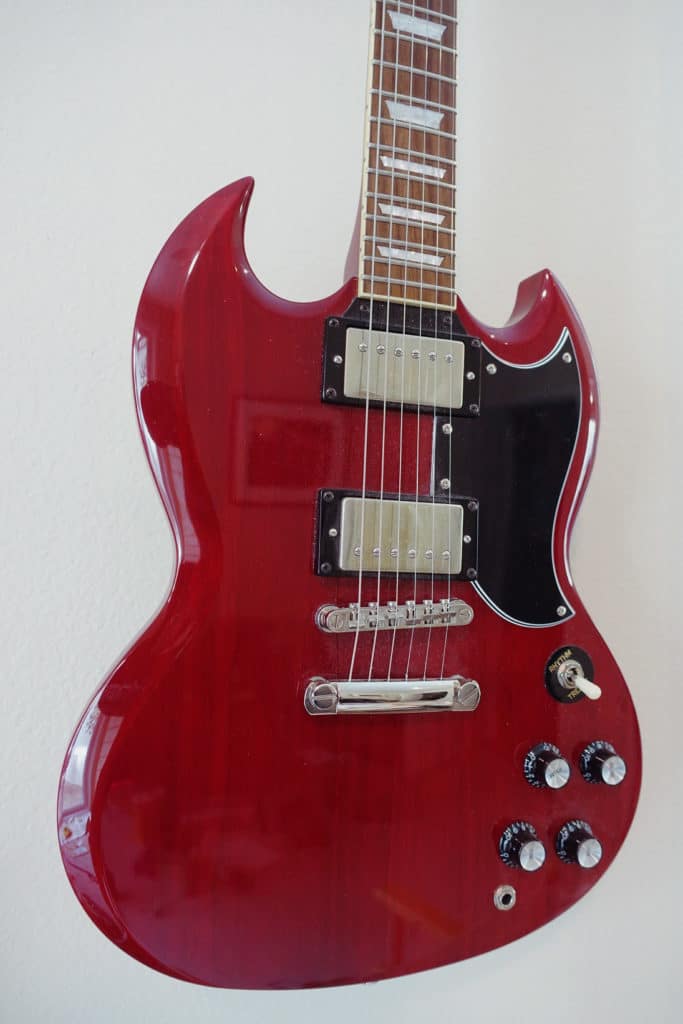
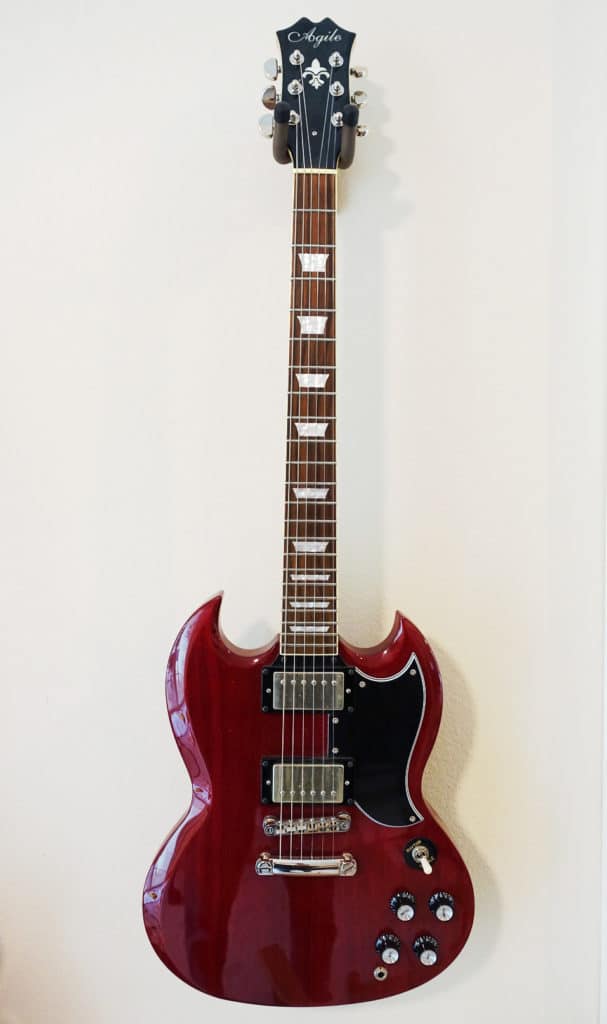
Agile PS-100 (PRS SE-like)
A 24-fret shredder guitar for the most part. I have had a number of different pickups in it including a DiMarzio D-Sonic, DiMarzio Air Norton, Tom Anderson H2+, and some others I’m sure. I just like messing with that one because I don’t identify as a shredder, but it’s fun to let ‘er rip on occasion. I put in push-pull pots for coil splitting both pickups.
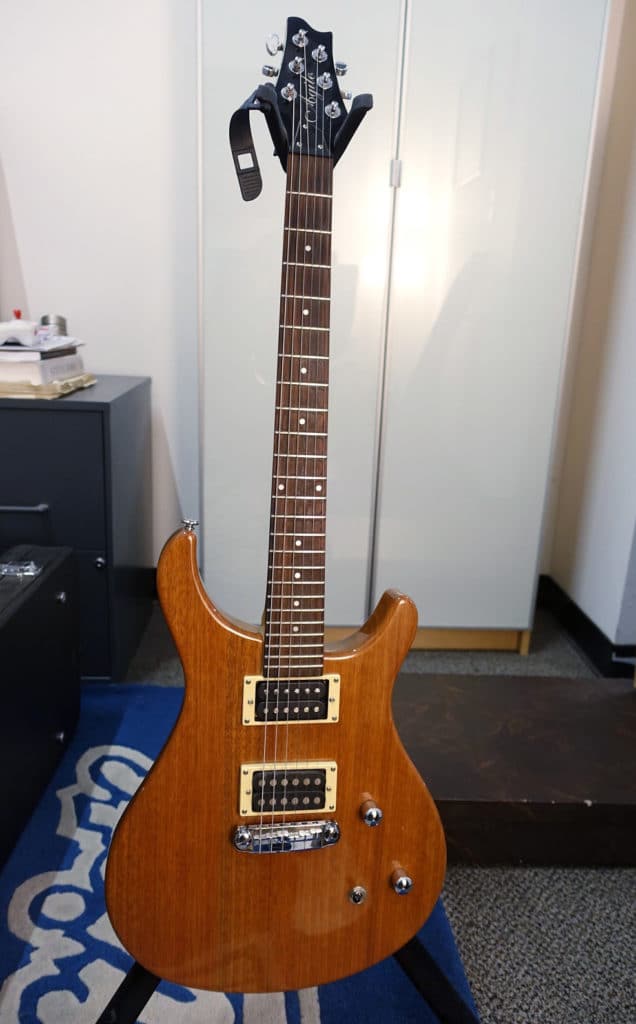
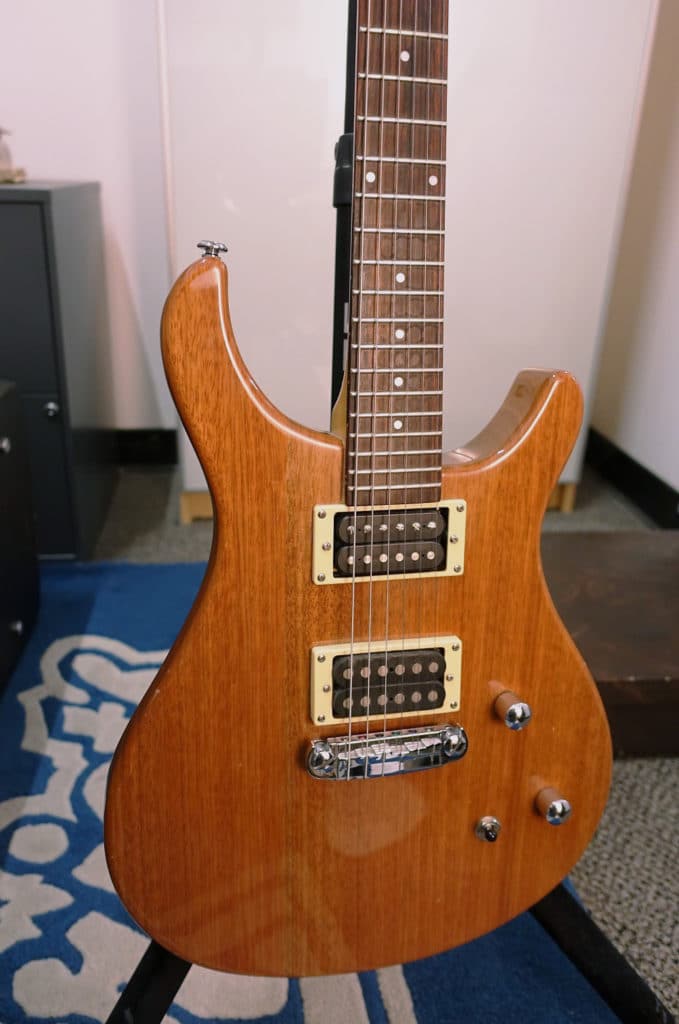
Agile Harm 1 (Rickenbacker-like) Semi Hollow
I replaced the original mini humbuckers with Artec Toaster pickups and rewired the control layout for volume, tone, and coil split.
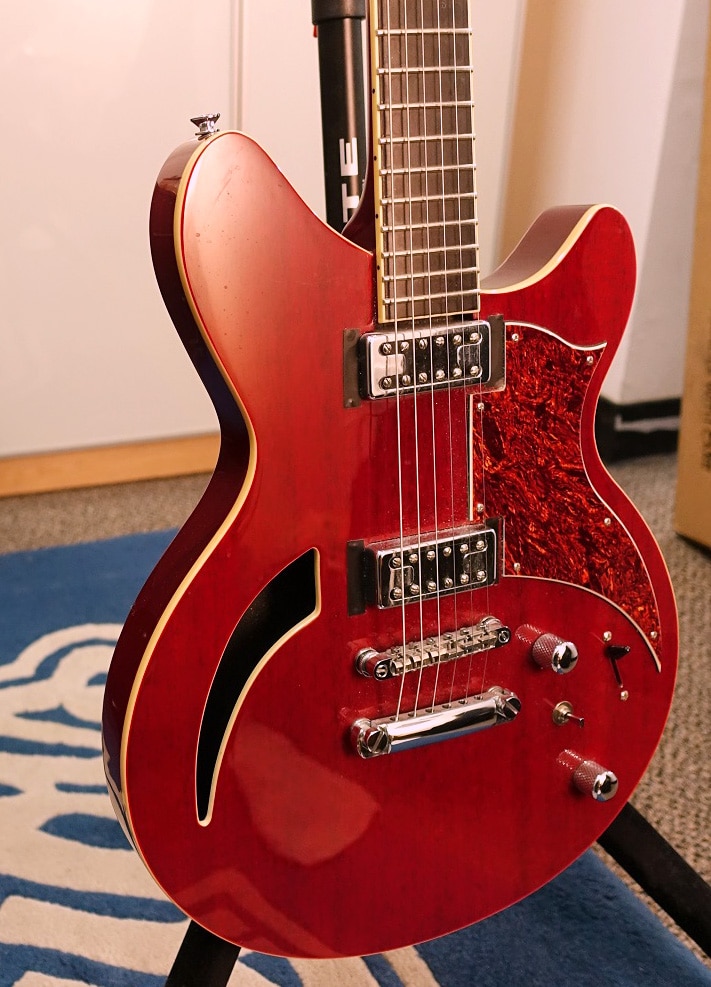
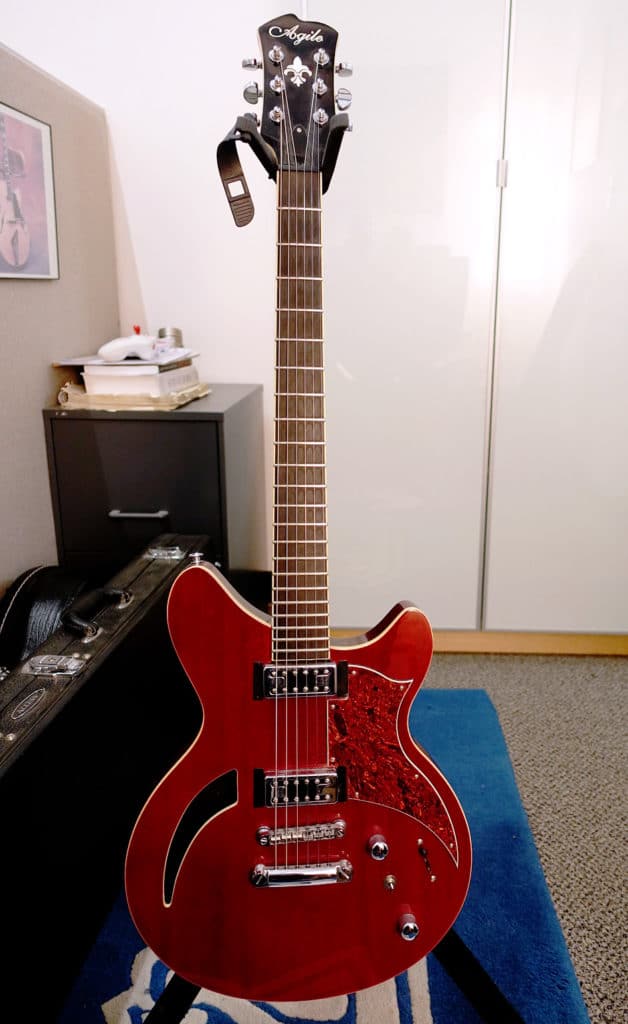
Please tell us about your Frankenstein Agile, and what inspired it.
It was originally an Agile TC-730 model, basically a thin-line Tele-style guitar. The body looks great with a flamed top. The neck had some issues and I didn’t bond with it, so since it was a bolt-on it was time to do some modding. I changed the six-saddle bridge to a three-saddle by drilling the back of the bridge plate to allow for proper alignment. I installed compensated bronze saddles and replaced the pickups with a Fender Vintage Telecaster set. The biggest change was to install a Fender neck that I had lying around from a 1990 American Standard Strat. I never really liked that neck when it was on the Strat but somehow it feels great on the Agile Tele. Also, I’ve been a fan of the Strat headstock on a Tele body since the early Steve Morse years. It’s a really nice guitar now, and it’s pretty unique as well. It plays great and has a classic Tele signature sound.
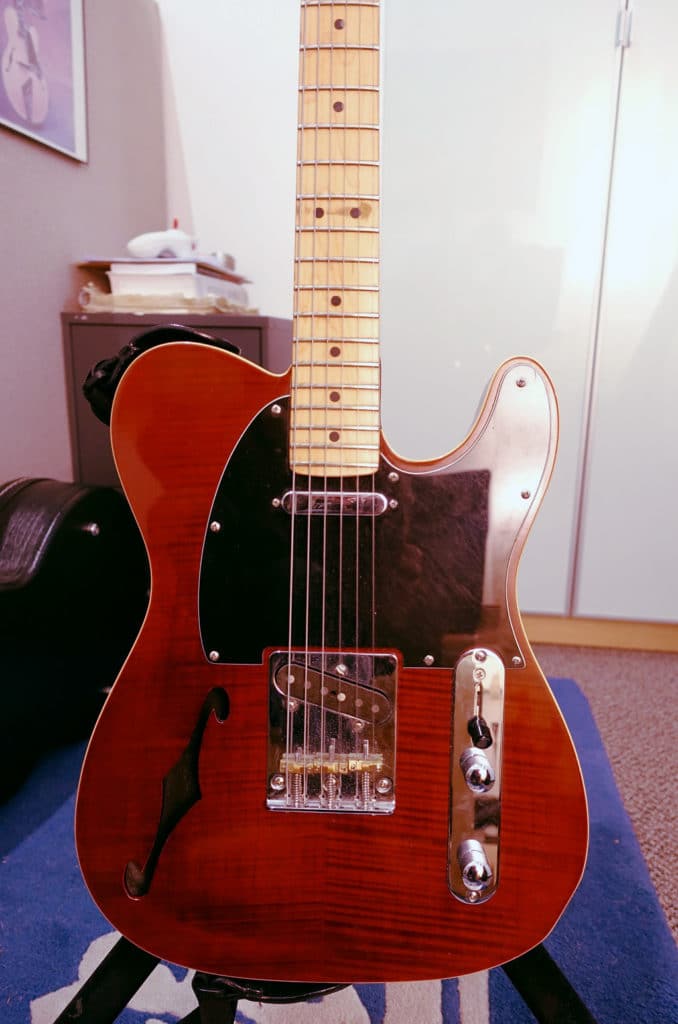
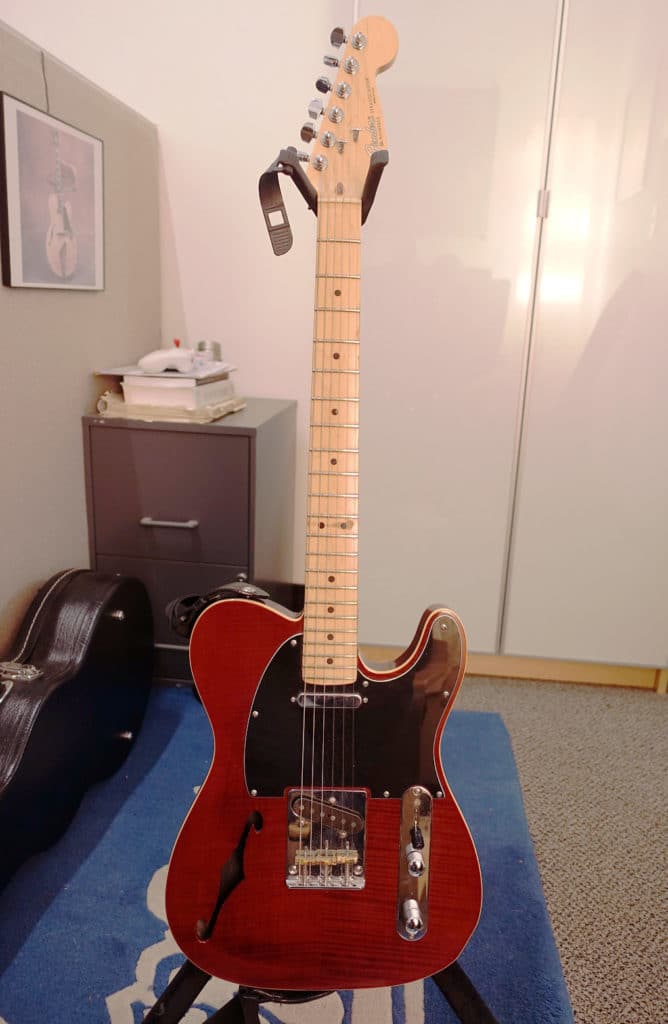
And what does each of them sound like? Here are just a few of the videos they have been featured in:
Agile AL-3000 – Strymon Lex Rotary Demo
Agile AL-3000 – Strymon Deco – Wide Stereo Mode Demo
Agile Valkyrie – Strymon Sunset – Dual Overdrive – Audio Examples
Agile PS-100 – Strymon Sunset – Dual Overdrive – Audio Examples
Agile Harm 1 – Strymon Riverside – Multistage Drive – Audio Examples
Agile Harm 1 – Natalie Carol (Valley Queen) and William Tyler
Agile TC-730 (AKA Pete’s Frankenstein Agile) – Strymon Volante – Studio Echo Examples – Demo
Stay tuned for another blog that will feature Fender guitars used in our Strymon demos 🙂
Now it’s your turn. Do you have an Agile guitar? Please share in the comments what your favorite thing about your Agile is.
Subscribe to our newsletter to be the first to hear about new Strymon products, artist features, and behind the scenes content!

Strymon co-founder Pete Celi is responsible for the sound design and DSP algorithm creation for all the Strymon pedals that use DSP. Recently I had the
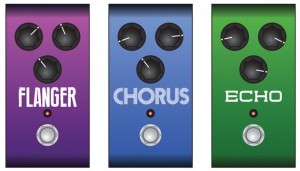
Our own Pete Celi is at it again—tracing today’s popular guitar effects such as flanging, echo, and chorus to the early days of tape recording studios.
4 Responses
I have had several Agile guitars including the AL 3000 series. I have liked them very much. They play very well and feel substantial in the hands. I do have two Agile AS-2000’s which are LP style mahogany bodies with semi-hollow wings routed out of the mahogany body, and capped by a 3/4″ maple arched top. They are now discontinued, like so many of the models. The build is like the Gibson CS-336. Agile has offered so many guitars in very many styles of finish. They have generally been very good quality Korean made electric guitars.
Always nice to hear from another Agile user. 🙂
I have many Agiles in the herd, mainly the result of the insane B-stock sales that they used to have at the Rondo guitar website back in the day. Barely noticeable flaws or things easily repaired, would knock off 20-25% from the already incredible bargain prices. I would most always play my Agiles at gigs where the potential for damage or thievery was high.
Kind of like a stealth brand really; just as good after a bit of tweaking, as a Gibson, but not particularly high on anyone’s black market sales list. Lots of high-end features like multi-layer binding, ebony fretboards, mahogany bodies, flame maple veneers and decent hardware and excellent South Korean build quality. In fact, they were one of the first companies to start importing quality instruments from that country.
I also should mention the lower-tier “SX” line as well. These were mostly strat-type guitars (SST), but they also made some of their own unique offset designs like the SXM (now called “Liquid”). These were great raw materials to hone one’s modding skills, with high end tone woods like swamp ash, although they played just fine out of the box.
*SJM, can’t edit the typo.